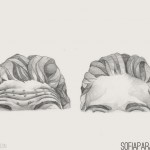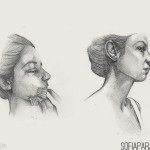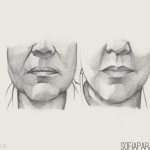BOTOX
Introduction
Botulotoxin type A has been used in medicine for the last 35 years. Lately it has become popularized due to its aesthetic application. The action of botox is to block the normal nerve impulse to the muscles thus blocking muscle contraction.
Wrinkles can be static (like the fine lines caused mainly by the sun) or dynamic (deeper lines caused by the repetitive muscle contraction, as for example the frown lines).
The main indication for Botox therapy are the dynamic wrinkles which respond readily to this kind of treatment. Therefore the most suitable areas for Botox treatment are the upper third of the face (forehead horizontal lines, frown lines, crow’s feet, bunny lines) and specific areas of the lower third of the face (marionette lines, platysma bands).
Botox can also be used in cases of facial palsy in order to achieve balance between the normal and paretic side of the face. It also provides an excellent treatment for blepharospasm (upper eyelid tic) and others facial tics.
It’s an approved treatment for hyperhidrosis (axilla, feet, palms).
Last but not least, botox can offer a solution for tension migraines.
The treatment
The procedure lasts about 40’. During consultation we discuss about the areas to be treated. You can use anaesthetic cream 1 hour before the application of Botox. In any case, mild pinching pain might be experienced during injection attributed to the drug itself. Botox effect starts from the next day and its results can be seen from day 3 to 5.
This result will improve within 2 weeks from the treatment. Maximum action of Botox lasts for 5-6 months but it’s still present and exerting its action for up to 12 months after the application
Complications
After the treatment, skin is mildly erythematous for about 15-30’. Bruising can occur from some small superficial skin vessel rupture. It will take about 7 days to resorb but it will heal faster if you use arnica (tablets or gel). You can use concealer from the next day. There is possibility of upper eyelid ptosis due to drug diffusion, especially in patients with lax skin or in cases of over treatment of forehead horizontal wrinkles.
Botox does not have permanent action therefore treatment needs to be repeated every 8 months approximately for aesthetic reasons and more often for paretic reasons.
After the treatment
No special care is needed after Botox treatment. Arnica tablets or gel can be used when bruising occurs. You can apply any cosmetics normally after the treatment. It’s better to avoid bending forward and lying down for a couple of hours after the treatment. It’s also advised to avoid heavy exercise or any activity with high temperature (e.g. hamam, sauna etc)
Hyaluronic acid
Introduction
Hyaluronic acid (HA) has synergistic action with our own hyaluronic acid and creates volume under the skin, filling up static wrinkles. There are several types and concentrations of HA in market. Your doctor will explain to you the differences.
The procedure
The treatment takes around 45 minutes depending on the area treated. A local anaesthetic cream should be applied to the area treated one hour beforehand and sometimes a local block can be useful especially when treating an area like the lips. Allergic reactions are extremely uncommon.
Side effects
Rarely side effects occur, especially in allergic people. They include an allergic rash over the area treated or the formation of nodules (granulomas) under the skin. With the drug technology development these are rare incidences.
After the treatment
Immediately after the treatment the area treated may be slightly red, swollen and tender. An itchy sensation in the treated area is not uncommon. This inconvenience is temporary and a normal result of the injection. Bruising can occur in the area treated. Redness and bruising can easily be covered with cosmetics. The lips are more sensitive and the discomfort may last longer.
The final result should only be judged once all swelling and bruising disappears, usually 1 week after the treatment. The correction done with HA is not permanent and will normally last for around 6 months after which most people choose to be treated again.
THREAD LIFT
Introduction
It’s a non-operative way to lift the areas affected by gravity on the face and neck. The threads used are composed from 100% absorbable material, which after being inserted under the skin enhance collagenesis. This forms an internal “hidden” scar which pulls and elevates the areas of interest. The surgeon uses both Polylactic Acid and PDO sutures. The treatment can be done on the face and body.
The procedure
It lasts about 45-60’. Anaesthetic cream has to be used 1 hour before the treatment. Multiple needle insertions are done on the skin in order to place the adequate number of threads needed according the area treated. Afterwards, the needles are removed and the threads remain under your skin. In case threads with cones or cogs are used, you will experience some kind of tension while the surgeon pulls the skin towards the desirable direction.
Complications
In some cases, superficial skin vessels may be damaged, causing a bruise or cutaneous nerve branches causing a burning sensation along the course of the nerve. Both incidences are temporary, the first lasting for a week but the second may last for up to 6 months.
After the treatment
When it’s done on the face, it’s advised not to eat very hard food for the first 24 hours. It’s possible that you might experience pulling sensation when laughing or yawning during the first 48 hours.
If the treatment is done on any body part, you should avoid exercising for at least 10 days.
The result can be judged 3 months after the application, when -theoretically- new collagen will have been forming in the area of treatment.




